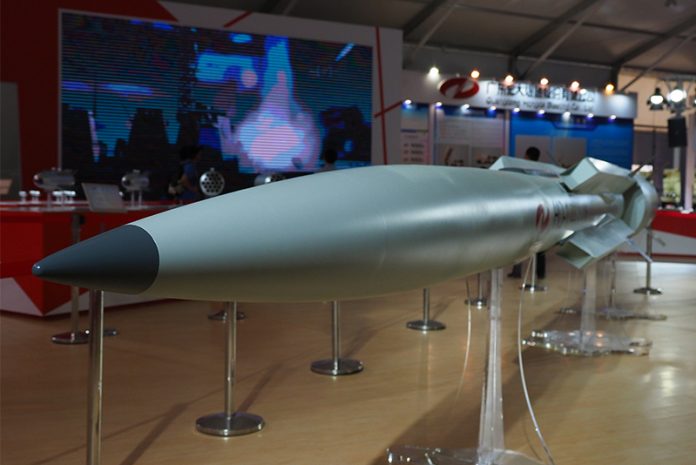Guangdong Hongda Blasting Company, a Guangzhou-based firm that specialises in commercial explosives and mining equipment, stunned the world in early October when it announced that it had successfully launched and tested a supersonic cruise missile called the HD-1.
Further details of the missile development were subsequently released by the company. These revealed that the HD-1 is a land-based precision strike weapon with a maximum range of 290km and can travel at speeds between Mach 2.2-3.5 depending on its flight profile. It can perform sea skimming anti-ship operations flying at 5-10 metres above the waves, or cruise at altitudes of up to 15km before diving down for a top attack on its target.
The HD-1 employs ramjet propulsion technology to attain its high speed, but requires a booster rocket to achieve height and sufficient speed to engage its ramjets. It is aimed at the export market and can also be adapted for air- and ship-launch operations, which expands its utility for potential customers.
Pakistan’s rapidly evolving missile arsenal forms an important part of its defence strategy and currently comprises mobile short and medium-range ballistic missiles, but it is also making significant strides into its indigenous cruise missile capability. However, its present Hatf 7 and in-development Hatf 8 cruise missiles are all subsonic types, which are less survivable in highly defended airspace.
In this context there could be a potential interest by Pakistan to acquire a capability that could match the Russo-Indian BrahMos (PJ-10) series of supersonic cruise missiles designed to be launched from land-based platforms, as well as ships, aircraft and submarines. The land- and ship-launched variants of the BrahMos are already in service with the Indian armed forces, while the air-launched version is undergoing testing.













